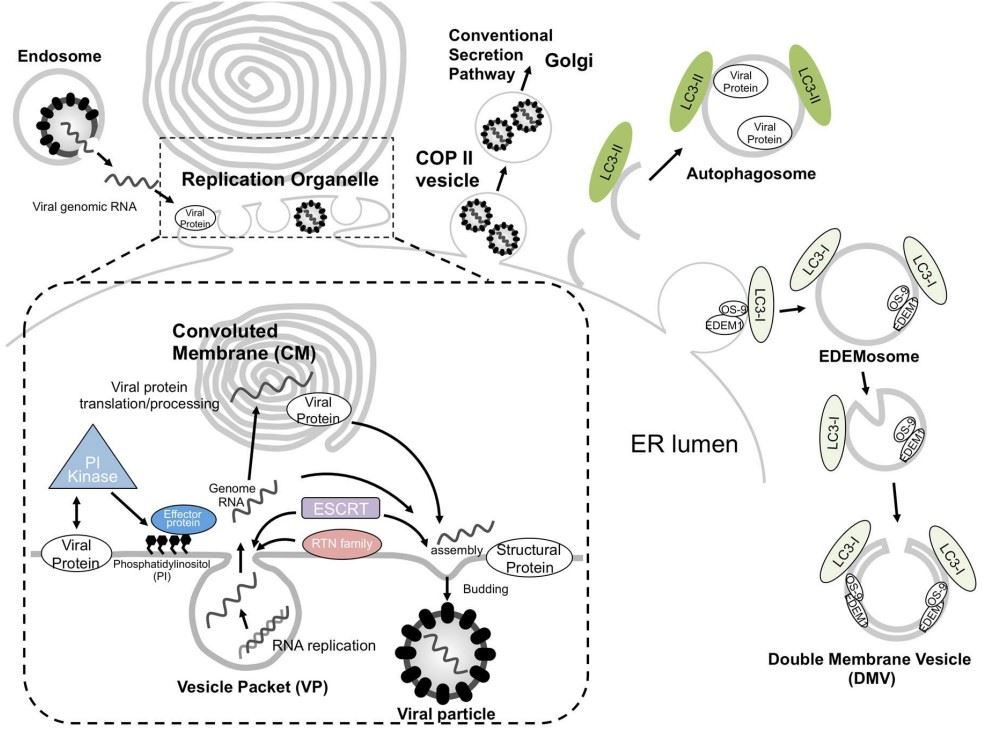Positive-sense single-stranded RNA viruses are characterized by their genomes, which are comprised of a positive-sense or positive-stranded form of single-stranded RNA. This categorization, also known as Group IV under the Baltimore classification system of viruses, represents an extensive group of viruses that pose significant health threats to both animals and humans. Creative Biolabs provides extensive research-grade services dedicated to drug discovery primarily targeting positive-sense single-stranded RNA viruses, aiming to bolster our clients' research endeavors focused on single-stranded RNA viruses.
RNA structure:
These viruses possess a specific type of genetic material known as positive-sense single-stranded RNA (ssRNA). This particular RNA form can be directly translated into proteins by the machinery of the host cell, akin to messenger RNA (mRNA).
Transmission.
Various means, including physical contact, inhalation of respiratory droplets, fecal-oral transmission, or through vectors like mosquitoes, can transmit positive-sense single-stranded RNA viruses.
Protein synthesis and replication mechanism:
Upon entry into the host cell, the virus's RNA is translated directly into an extended chain of proteins, termed a polyprotein by cellular ribosomes. Following this, proteases break down the polyprotein into several smaller, functional proteins. The virus also employs an enzyme called RNA-dependent RNA polymerase (RdRp) to replicate its genetic material within the host cell.
Pathogenicity aspect.
Positive-sense ssRNA viruses are the causative agents for several known human and animal diseases. These include the common cold (caused by rhinoviruses), polio (triggered by poliovirus), hepatitis C (stemming from hepaciviruses), and the well-known SARS, MERS, and COVID-19 coronaviruses.
Diagnosis and detection.
For these types of viruses, diagnostic procedures encompass PCR testing, sequencing, and serological testing. PCR testing is frequently used to identify the presence of the viral RNA in a patient's sample.
Envelope status.
Positive-sense ssRNA viruses may or may not have an envelope. They can be enveloped, which means they possess a lipid bilayer shielding their protein coat, as seen in coronaviruses. Alternatively, they can be non-enveloped, like picornaviruses. This characteristic can influence the virus's mode of transmission, stability, and resistance to disinfectants.
 Fig. 1 Positive-sense single-stranded RNA viruses replication organelle biogenesis in the endoplasmic reticulum.1
Fig. 1 Positive-sense single-stranded RNA viruses replication organelle biogenesis in the endoplasmic reticulum.1
The drug discovery strategy for positive-sense single-stranded RNA viruses revolves around inhibiting the virus from further infection, replication, and transmission since the positive-sense RNA can directly translate into proteins and replicate to produce additional viral particles after infection has occurred in a cell.
Creative Biolabs aims to provide our clients with personalized research-grade drug discovery services to help accelerate the research and control of virus-associated diseases. If you have any questions about our services, please contact us.
Reference: